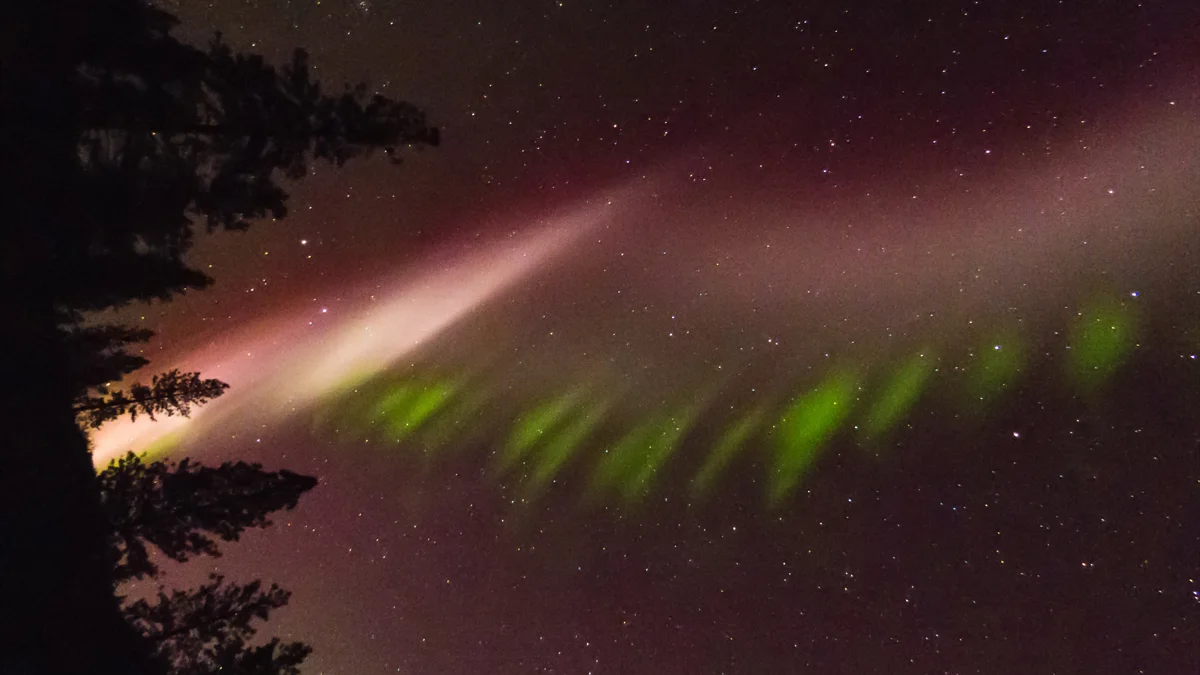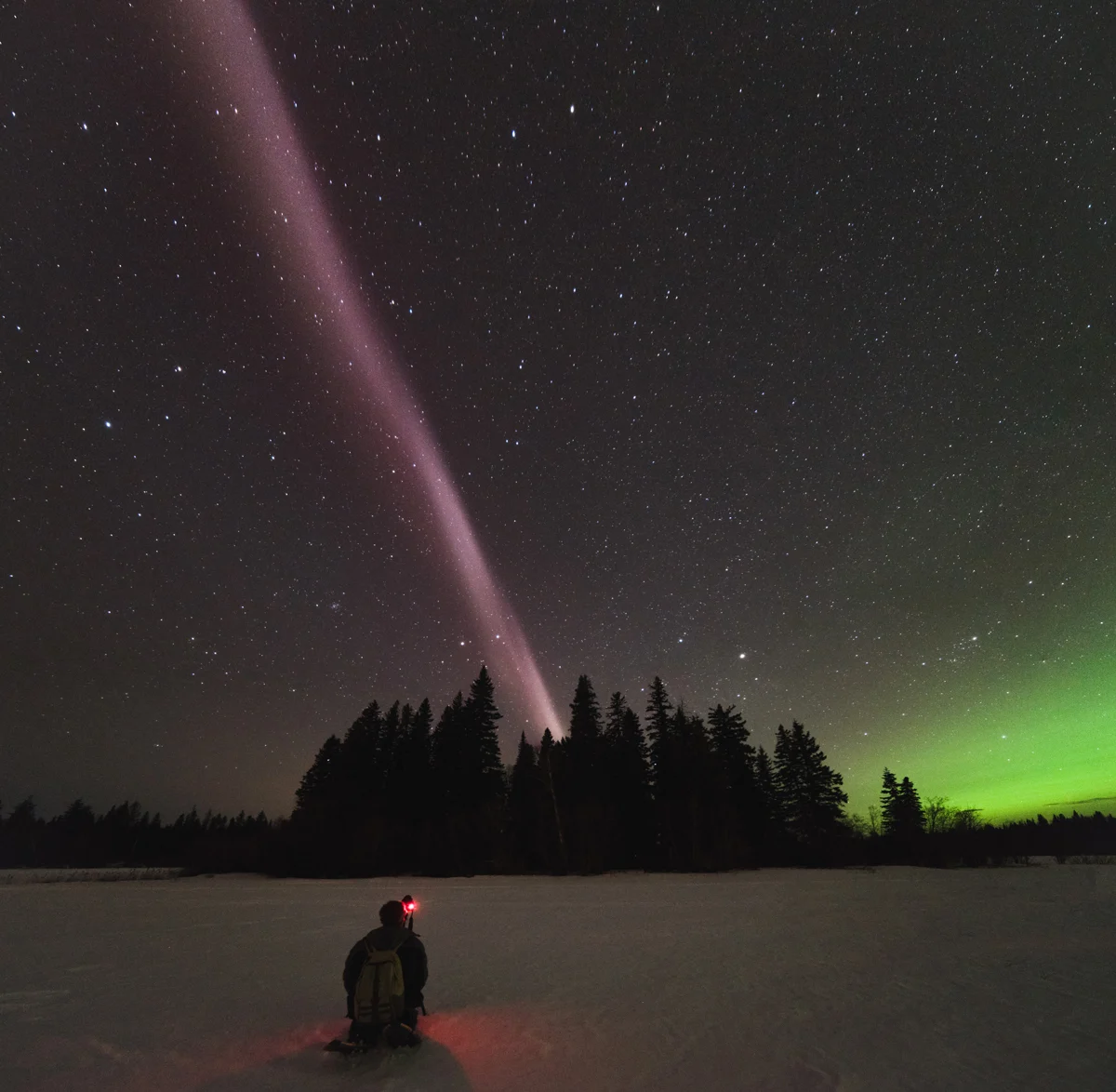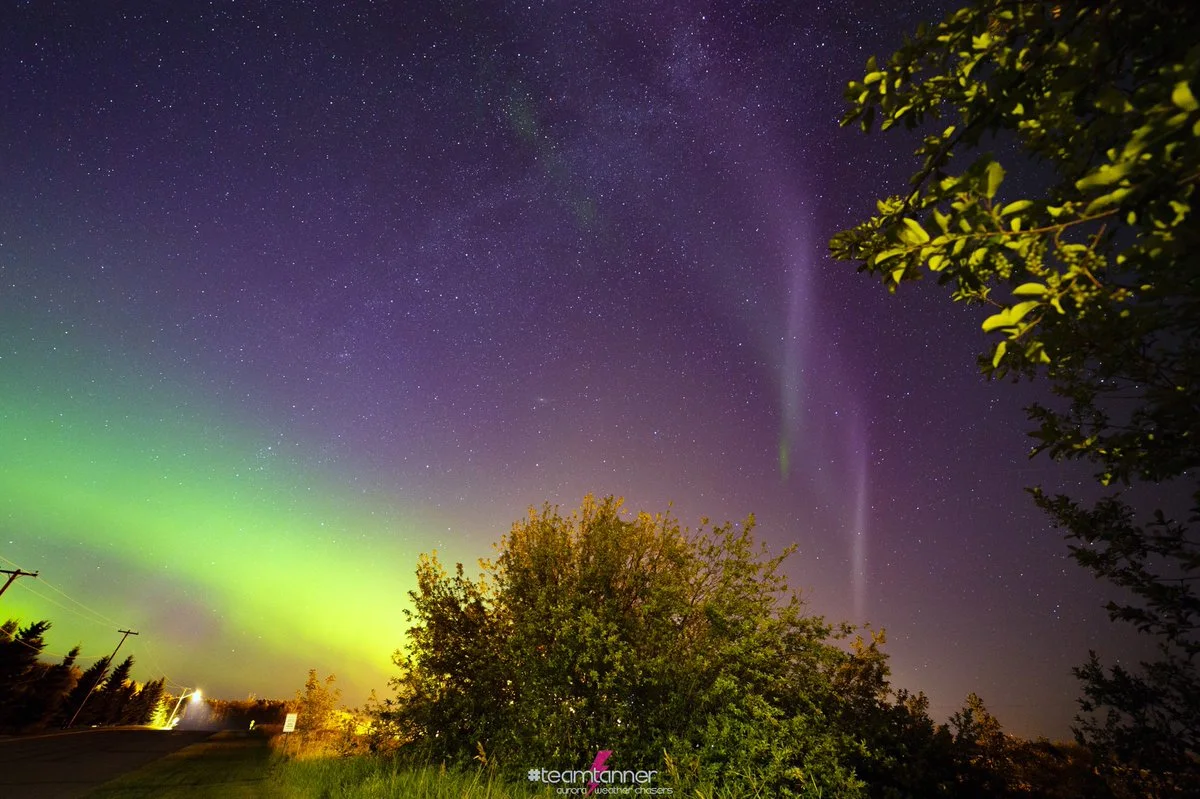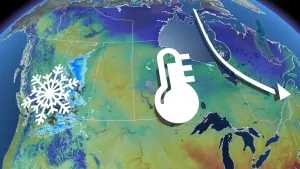
Glowing arcs named 'STEVE' are much stranger than we thought
Is mysterious STEVE an aurora or not an aurora? According to a new study, the answer is yes!
For years, aurora watchers across Canada have been spying a very unusual phenomenon in their skies, similar to the Northern Lights that they hope to see on their nightly excursions, but in some ways, very different.
These arcs of light, combining swaths of purple and pillars of green, originally known as 'proton arcs', were branded with a new monicker just two years ago - STEVE, which stands for Sudden Thermal Emission Velocity Enhancement.

Alberta Aurora Chasers captured STEVE on April 10, 2018 in Prince George, British Columbia, Canada. Credit: Ryan Sault. Courtesy: AGU
Although STEVE often occurred at the same time as traditional auroras, and another, generally invisible phenomena, known as a 'proton aurora' (the reason for STEVE's original 'proton arc' name), it was so different, and it happened far enough to the south of the other auroras, that noone knew exactly what was causing them.
Since aurora and space weather scientists stepped up to begin investigating STEVE, they have used observations, mixed with data from satellites in space, to attempt to solve this mystery.
Watch to the end of this amazing aurora display to see STEVE in action
A study published in 2018, led by Bea Gallardo-Lacourt, a space physicist at the University of Calgary, came to the conclusion that STEVE was not actually an aurora.
Auroras - the Northern Lights and Southern Lights - are caused by charged particles from the Sun (electrons and protons), streaming down from space along the lines of Earth's geomagnetic field, and striking air molecules in the upper atmosphere. This transfers part of their energy to those molecules, and the molecules release that excess energy by emitting light. Different molecules emit different colours of light, creating the different aurora patterns that are seen in the night sky.
STEVE, on the other hand, appeared to happen where there was no rain of charged particles. Instead, based on satellite data from two missions - NASA's Time History of Events and Macroscale Interactions during Substorms (THEMIS) and NOAA’s Polar Orbiting Environmental Satellite 17 (POES-17) - it was found that the pale purple arc of STEVE was emitted by air molecules that were heated to extreme temperatures by some process that is occurring in the atmosphere. Thus, it could not be a type of aurora.

In this photo, captured by Alberta aurora photographers Theresa and Darlene Tanner on July 17, 2018, shows the diffuse green electron aurora off to the lower left, and two swaths of a different phenomenon on the right, which has been called 'proton arc', 'sub-auroral arc', or more recently, 'STEVE'. Credit: Team Tanner Photography
Building upon that research, a brand new study, co-authored by Gallardo-Lacourt, has now found that this conclusion appears to be only partly correct.
STEVE is, apparently, both aurora and not aurora, at the same time!
This new study, led by Yukitoshi Nishimura from UCLA, compared observations of STEVE with data from three different satellite missions in Earth's magnetosphere and first confirmed that the pale purple arcs were not auroras. They were not caused by charged particles from space, but instead, by 'rivers' of charged particles flowing in Earth's ionosphere, that transfer their energy to air molecules by friction.

This artist's rendition plots the magnetosphere during a STEVE occurrence. The ring of the auroral zone, in Earth's upper atmosphere, is shown in green around the Arctic. The THEMIS, SWARM and DMSP satellites (left and top and bottom) are shown inside the plasmasphere (blue), with the plasmapause (red). Waves in the plasmapause (red arrows) are thought to be partly responsible for STEVE, shown inset, which occurs to the south of the aurora zone. Credit: Emmanuel Masongsong, UCLA, and Yukitoshi Nishimura, BU/UCLA. Courtesy: AGU
STEVE isn't only the purple arcs, though. Green 'picket fence' lights often appear along with the purple arc, and this new study revealed these green lights are a type of aurora.
The high energy particles that produce these green lights are similar to those from the Sun, which cause aurora displays farther north. They appear farther to the south of traditional auroras, apparently, because they originate from inside Earth's magnetosphere, after being knocked out by high-frequency waves.
"Aurora is defined by particle precipitation, electrons and protons actually falling into our atmosphere, whereas the STEVE atmospheric glow comes from heating without particle precipitation," Gallardo-Lacourt told AGU News. "The precipitating electrons that cause the green picket fence are thus aurora, though this occurs outside the auroral zone, so it's indeed unique."










